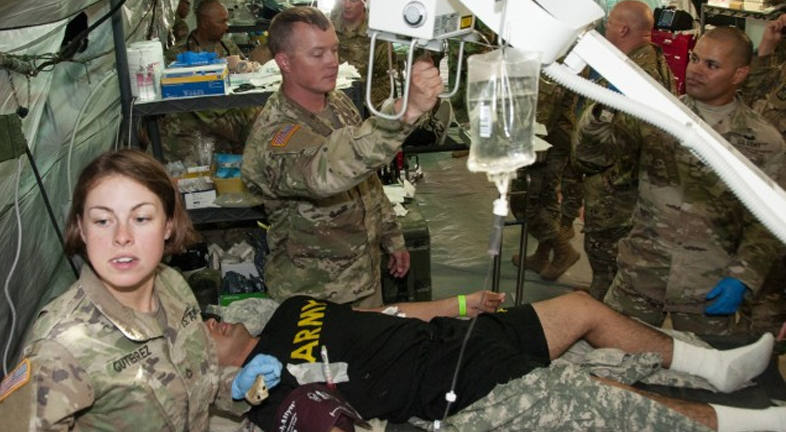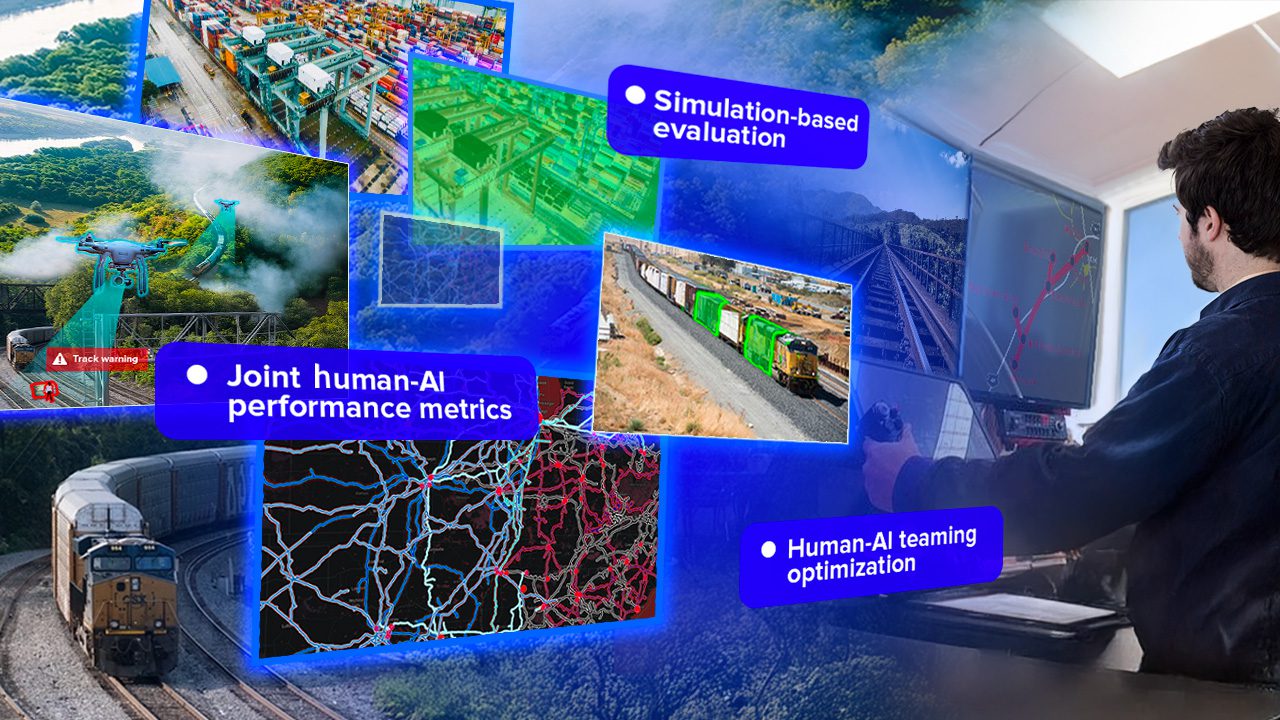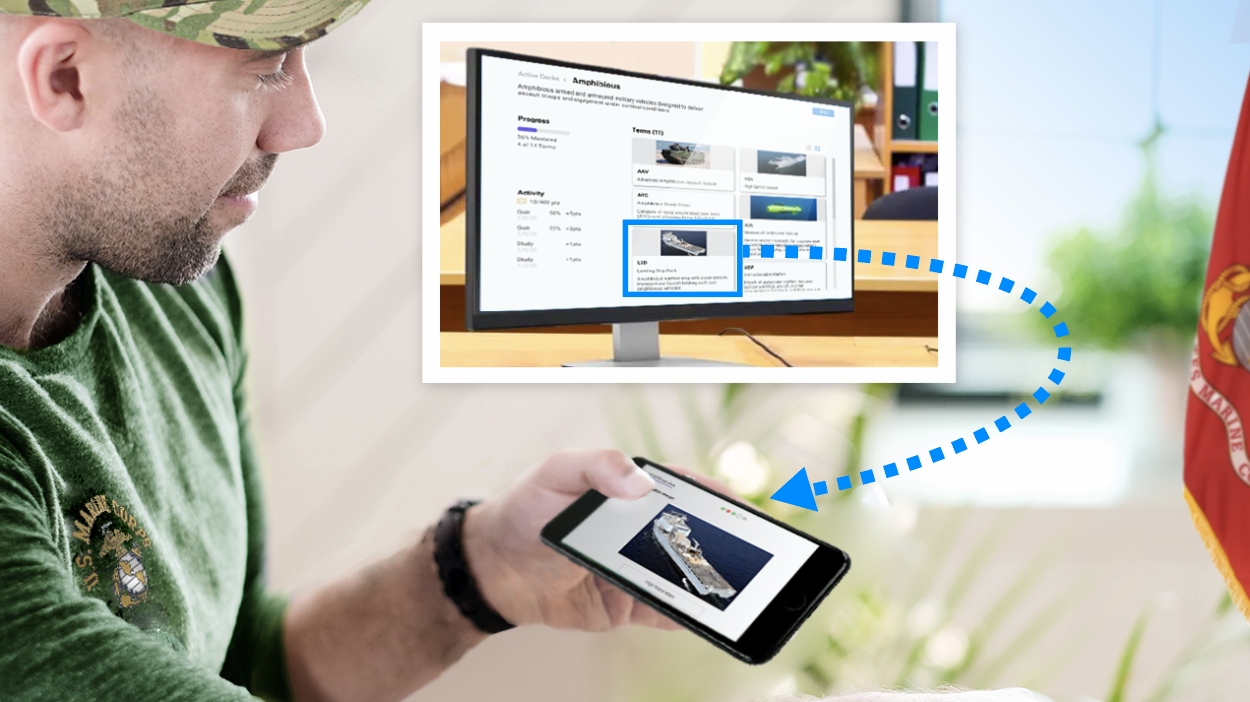Personnel in civilian health systems and in deployed military settings must be prepared for the worst-case scenario: mass casualty incidents, in which extreme numbers of critically injured people overwhelm available resources. Responding to these events is complicated and resource-intensive; an elaborate combination of medical personnel and other responders work in synchrony, often with little preparation, to save as many lives as they can. Executing a mass casualty response is made even more difficult by an absence of tools that allow personnel to practice critical skills.
Since 2017, Charles River scientists and engineers have been developing a virtual training system that provides practice for medical personnel and their teammates who respond to mass casualty events. The training is geared toward events that take place in austere, far-forward, and access-denied environments, where conditions are especially challenging—there may not be enough supplies available to save current casualties, or enemy fire may make evacuation impossible.The best existing training methods for these incidents require the assembly of large numbers of specialists in real-world enactments, where manikins or actors play the victims. Unfortunately, because so many people are involved, these large-scale events happen only every few years, if at all. In contrast, Charles River’s system enables a modern, gamified experience that immerses medical and other personnel within realistic exercises in virtual environments that are accessible from anywhere via their computers, VR headsets, and phones.
Charles River’s training system lets each type of personnel train in different modules tailored to their specific roles and skills. The system currently has three main training modes (additional modes are under development).

Search and Rescue lets first responders practice navigating hazardous scenes and treating casualties with a limited set of resources.
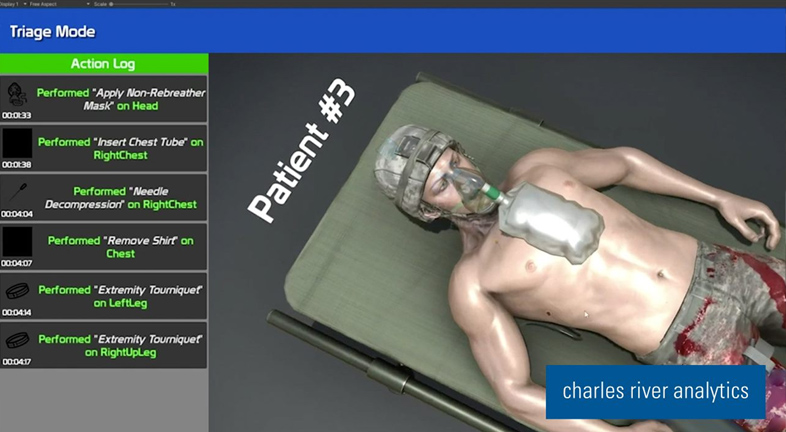
Triage gives hospital staff a chance to practice prioritizing just-injured casualties and provide initial life-sustaining interventions in a hospital setting.
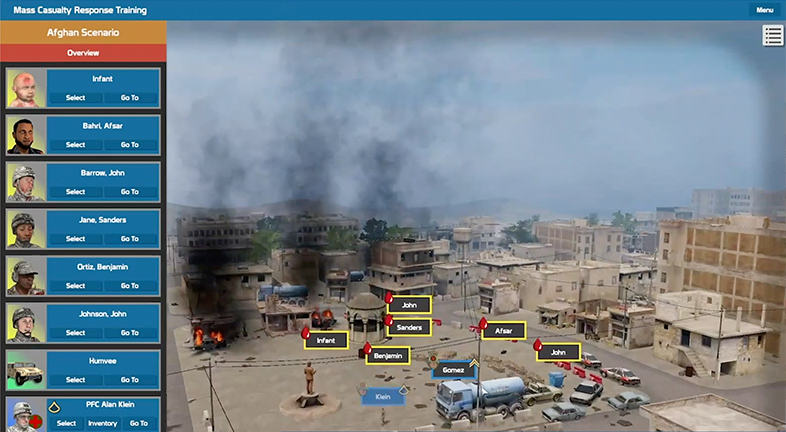 Incident Command is designed for the personnel who manage the logistics of the medical response. In a neighborhood-level aerial view of the disaster scene, users practice establishing casualty collection points, routing vehicles, and coordinating the transfer of medical resources.
Incident Command is designed for the personnel who manage the logistics of the medical response. In a neighborhood-level aerial view of the disaster scene, users practice establishing casualty collection points, routing vehicles, and coordinating the transfer of medical resources.The training system—called EFECTIVE—is implemented in the Unity game engine and C#, which allow it to run on a diverse set of hardware platforms.
EFECTIVE is currently at the advanced prototype level, shared Benjamin Bauchwitz, lead scientist on the effort. He will be demoing the prototype in January, the first in a series of demos during which he plans to gather feedback from potential partners and collaborators.
Want to get an early look and give us feedback on how EFECTIVE can better serve your community? Sign up for the demo here.
Bauchwitz and Charles River staff involved numerous medical specialists to guide the development of the system and make sure it will meet the needs of its end users. These specialists include John Broach, Emergency Physician at the University of Massachusetts Medical Center; Christopher Garrison, a professor in the College of Nursing at the Pennsylvania State University; retired Amy Major Pete Lancette, an Emergency Department Nurse who led Forward Surgical Teams while deployed in Afghanistan; and retired Air Force Col. Diane Fletcher, Assistant Chief Nurse at the Tallahassee Veterans’ Affairs Outpatient Clinic and experienced Air Force nursing leader.
With their help, Bauchwitz and his team systematically analyzed the specialized skills that mass casualty responders need to successfully handle an event. This analysis was recently described in a paper for the Industry Training, Simulation, and Education 2020 virtual conference, and laid the groundwork for the system prototype, which intelligently delivers the specific training experiences needed to develop target skills.
The work has brought lead software engineer Michael Makivic into closer contact with emergency medicine than he ever expected. Makivic has spent much of his time on the project researching guidelines for different types of injuries and injury interventions.
“Over time, I feel like I’ve gotten a deeper understanding of how tactical combat casualty care works,” Makivic said. “We are continuously getting feedback from experts in civilian disaster response, and from military personnel with experience on the battlefield.”
Makivic uses this knowledge of casualty care to implement virtual interactions between players and (non-player) patients. In the triage scenario, users select from a list of interventions that have simulated secondary effects for the virtual patients. For example, if a virtual patient presents with tension pneumothorax, a condition in which air is trapped in the chest, the user can select an intervention such as needle decompression to stabilize the patient’s breathing.
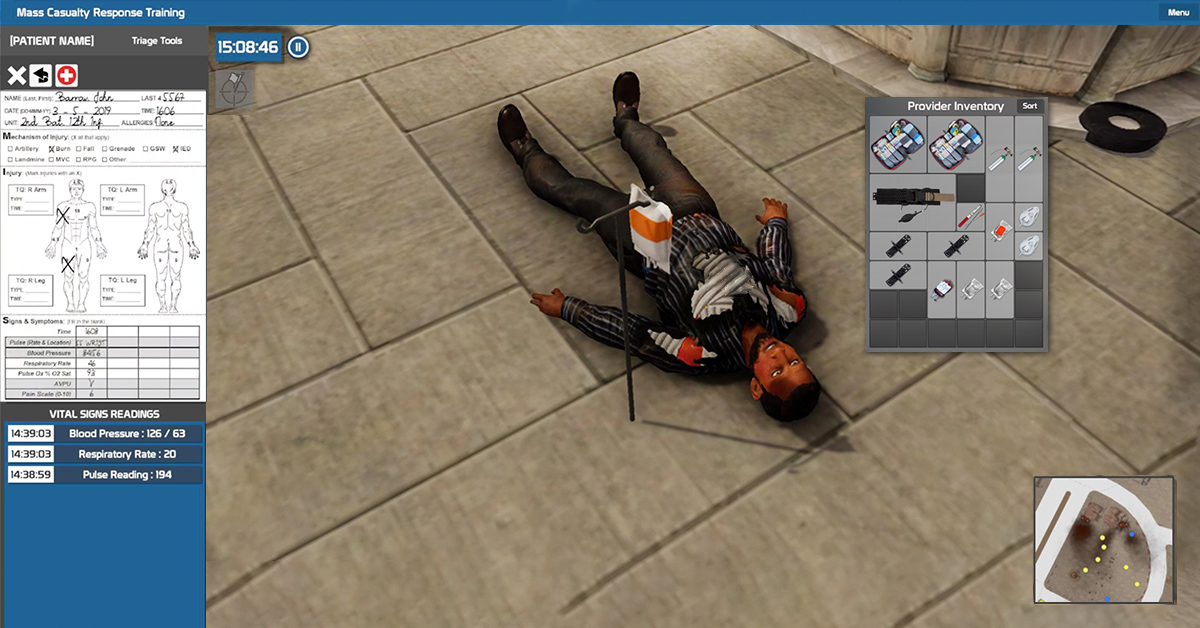 The EFECTIVE system provides an immersive experience of treatment using interfaces designed by medical specialists.
The EFECTIVE system provides an immersive experience of treatment using interfaces designed by medical specialists.According to Makivic, much of the feedback from the specialists has been on the interfaces for user/patient interaction. These interfaces have evolved from simple drop-down menus to more specialized interfaces customized for each body part.
Bauchwitz believes that there are no other tools out there that provide a level of mass casualty training similar to EFECTIVE. With more development, he sees the app as an important potential commercial software product for emergency medicine organizations.
Peter Weyhrauch, VP, Human-Computer Intelligent Systems, summed it up this way: “EFECTIVE is unique because it combines our ability to build these realistic game environments with our ability to understand a complex set of skills from an educational point of view.” Weyhrauch continued, “on top of everything, we apply our ‘secret sauce’—we use AI analytics and algorithms to adapt the training to the individual trainee and make sure it delivers maximum learning gains in the minimum time… something that’s especially important for those who have to take the training while still performing their jobs.”
By involving medical experts and seeking collaborative partners mid-development, the Charles River team is creating training that targets the actual skills performed during mass casualty events. With EFECTIVE, medical personnel can practice these skills enough to make them almost automatic when they must serve in extraordinary circumstances.
This work is supported by the US Army Medical Research and Materiel Command under Contract No. W81XWH-19-C-0044. The views, opinions and/or findings contained in this report are those of the author(s) and should not be construed as an official Department of the Army position, policy or decision unless so designated by other documentation.

